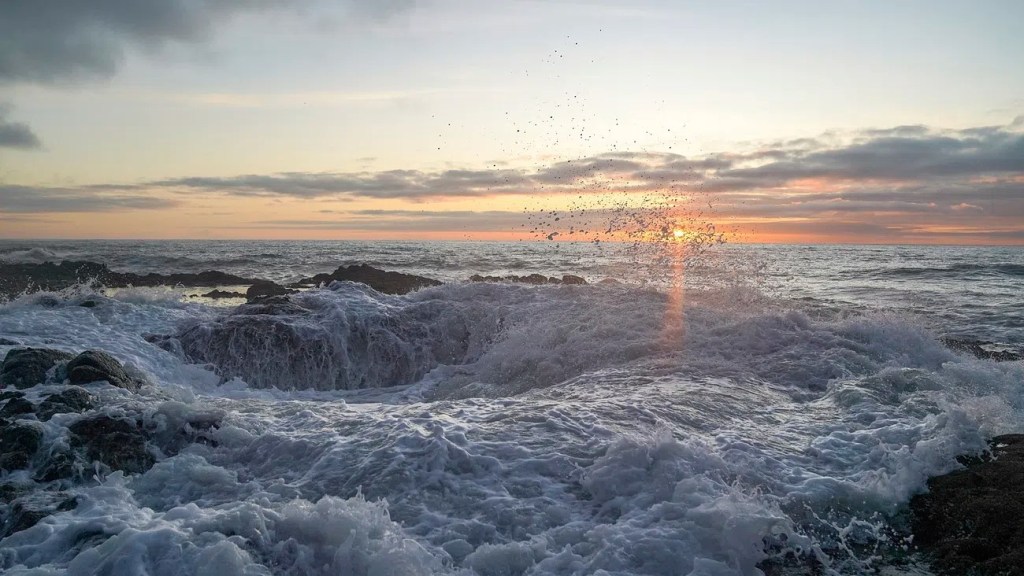The Legend of Spouting Horn
 If you visit the southside of Kauaʻi one of your stops will surely be world-famous Poiʻpū Beach, known for its monk seal sightings, playful sea turtles, and gorgeous beachfront. Just west of Poiʻpū you’ll find the Kukuiʻula Boat Harbor – popular for family beach days or sunset picnicking. As the road narrows along the coast, you’ll pass the National Tropical Botanical Gardens (NTBG) on your right, with daily tours and weekly farmer’s market and hula demonstrations. (Jurassic Park fans, remember when Dr. Alan Grant and the kids discovered the dinosaur eggs? Those as-seen-on-the-big-screen trees are at the botanical gardens!) Directly across from NTBG is where you’ll find the legendary Spouting Horn. An easy stop-and-site-see spot, Spouting Horn is a natural geyser/blowhole called puhi, or blowhole by Hawaiians. The dramatics of the spout changes day-to-day depending on the swell, but when the conditions are right, the power of Spouting Horn is an incredible force of nature.
If you visit the southside of Kauaʻi one of your stops will surely be world-famous Poiʻpū Beach, known for its monk seal sightings, playful sea turtles, and gorgeous beachfront. Just west of Poiʻpū you’ll find the Kukuiʻula Boat Harbor – popular for family beach days or sunset picnicking. As the road narrows along the coast, you’ll pass the National Tropical Botanical Gardens (NTBG) on your right, with daily tours and weekly farmer’s market and hula demonstrations. (Jurassic Park fans, remember when Dr. Alan Grant and the kids discovered the dinosaur eggs? Those as-seen-on-the-big-screen trees are at the botanical gardens!) Directly across from NTBG is where you’ll find the legendary Spouting Horn. An easy stop-and-site-see spot, Spouting Horn is a natural geyser/blowhole called puhi, or blowhole by Hawaiians. The dramatics of the spout changes day-to-day depending on the swell, but when the conditions are right, the power of Spouting Horn is an incredible force of nature.
The lava rock below the lookout doesn’t look like much at first glance, but as the ocean moves towards the rocks, it rushes into a sea cave below the surface, exploding out the top through the blowhole and spraying water into the air…sometimes up to 50 feet! The pure force of Spouting Horn is to be admired, but also approached with caution. Visitors are encouraged to remain behind the fence at the lookout to enjoy the view. Walking down onto the rocks is not only culturally insensitive, it is extremely dangerous as swells are unpredictable and the force of the water being sucked into the geyser is very strong.
Right before the explosion, onlookers will hear a low echoing “roar” or hissing coming from the blowhole, as if a sea monster or enormous snake may emerge at any moment. Of course the sound could be attributed to the sound of the water pressurizing and air leaking through the rocks, but native Hawaiians had another theory…
The legend says that Spouting Horn was once guarded by a moʻo, or giant lizard named Kaikapu who was very territorial. The moʻo would attack anyone who tried to come close to its underwater lair. Fishermen and swimmers stayed away for fear of being eaten by Kaikapu and warned others to do the same. However, a young boy named Liko was determined to reclaim that part of the coastline and lure Kaikapu into being contained to her cave.
When Liko arrived, Kaipaku emerged and attacked him as expected. Seeing the giant moʻo closing in on him, Liko shoved a sharp stick into her mouth and dove into the sea cave. Below the surface, Liko led an injured Kaikapu up a narrow lava tube, where she got stuck. Liko was able to escape and legend says that Kaikapu is still stuck in Spouting Horn’s blowhole, bellowing from beneath the surface and shooting her angry “breath” from the geyser.

Spouting Horn is the only remaining blowhole in the area, but there used to be an even larger geyser which sprayed up to 200 feet in the air nearby. (Imagine the size of the moʻo responsible for that!) The Kukuiʻula Sea Plume shot so high in fact that a 1920s plantation owner claimed it was affecting the sugarcane crops with its sea spray. The solution? Believe it or not…dynamite. The lava rocks were broken up with TNT and the magnificent geyser was no more, (which is not very pono.)
Thankfully, we now have rules in place to protect our ʻāina and history. As much as the threat of Pele’s wrath may deter visitors from destroying or removing lava rock from its intended home, it is now actually against the law to do so. So, visit respectfully and safely…and above all, with eyes peeled for Kaikapu’s return.
